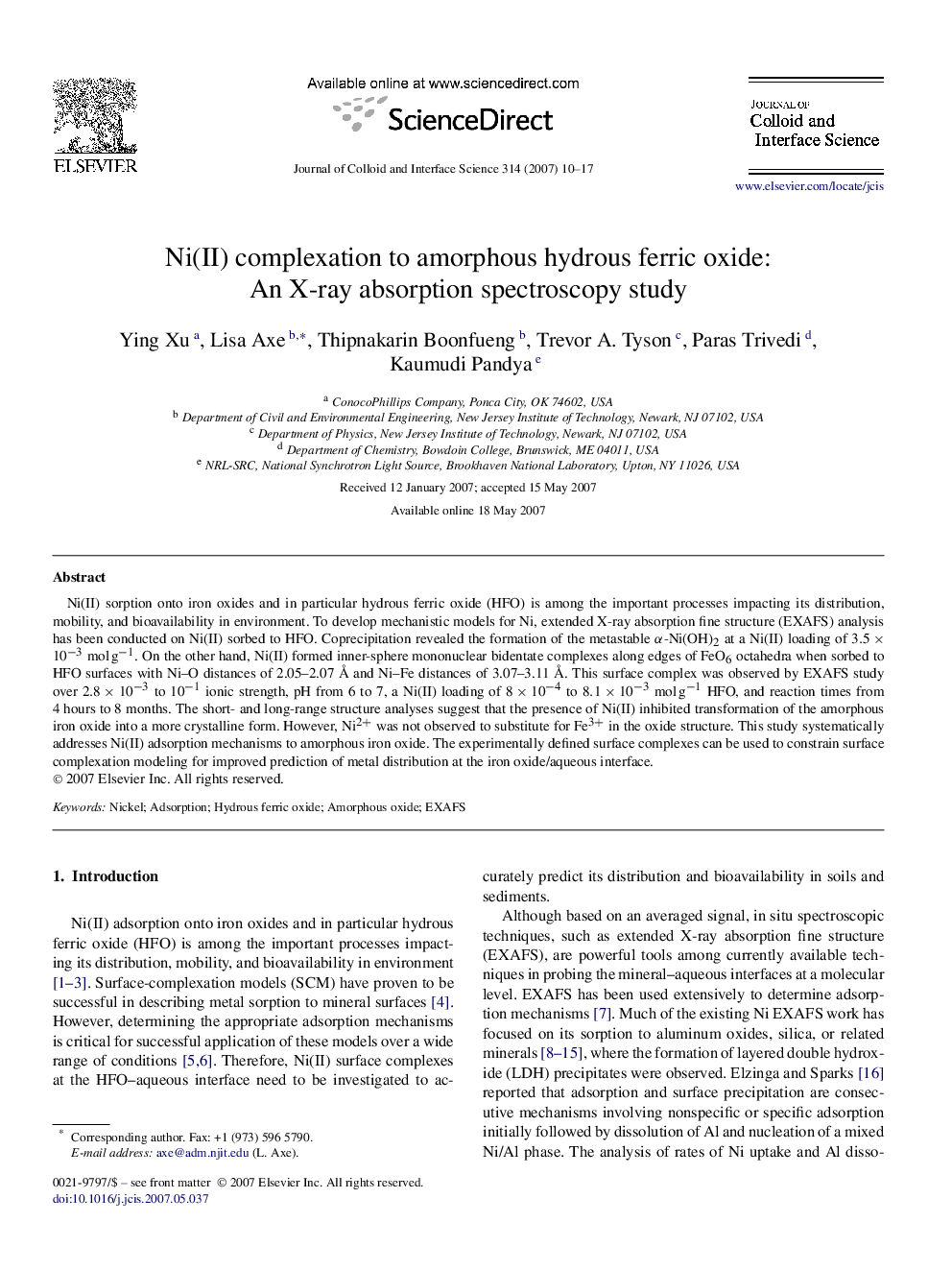| Article ID | Journal | Published Year | Pages | File Type |
|---|---|---|---|---|
| 612206 | Journal of Colloid and Interface Science | 2007 | 8 Pages |
Ni(II) sorption onto iron oxides and in particular hydrous ferric oxide (HFO) is among the important processes impacting its distribution, mobility, and bioavailability in environment. To develop mechanistic models for Ni, extended X-ray absorption fine structure (EXAFS) analysis has been conducted on Ni(II) sorbed to HFO. Coprecipitation revealed the formation of the metastable α-Ni(OH)2 at a Ni(II) loading of 3.5×10−3 molg−1. On the other hand, Ni(II) formed inner-sphere mononuclear bidentate complexes along edges of FeO6 octahedra when sorbed to HFO surfaces with Ni–O distances of 2.05–2.07 Å and Ni–Fe distances of 3.07–3.11 Å. This surface complex was observed by EXAFS study over 2.8×10−32.8×10−3 to 10−1 ionic strength, pH from 6 to 7, a Ni(II) loading of 8×10−48×10−4 to 8.1×10−3 molg−1 HFO, and reaction times from 4 hours to 8 months. The short- and long-range structure analyses suggest that the presence of Ni(II) inhibited transformation of the amorphous iron oxide into a more crystalline form. However, Ni2+ was not observed to substitute for Fe3+ in the oxide structure. This study systematically addresses Ni(II) adsorption mechanisms to amorphous iron oxide. The experimentally defined surface complexes can be used to constrain surface complexation modeling for improved prediction of metal distribution at the iron oxide/aqueous interface.
Graphical abstractNi K-edge χ(k)×k3χ(k)×k3 spectra of Ni–HFO sorption complexes as a function of pH, IS, adsorbate loading, and reaction time studied at room temperature.Figure optionsDownload full-size imageDownload as PowerPoint slide
